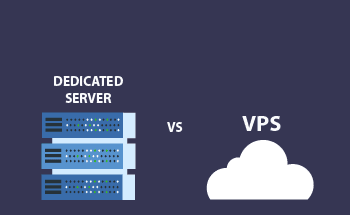CentOS vs Ubuntu: the choice of operating system for VPS
17:16, 15.02.2023
After having purchased a VPS, many people think about choosing the right operating system for their virtual server. The choice, of course, falls on Linux. One of the advantages of Linux over Windows is that it is an Open Source operating system. In contrast to Windows, Linux does not prevent users from keeping track of the software. Due to this, the operating system has a large online community.
Ubuntu and CentOS are the main Linux distributions used in VPS. They are among the stable server operating systems, each of which has its own strengths. Some of the differences between them can influence the choice of operating system. In this article, we will take a closer look at both distributions and figure out which system is better for a VPS.
The origins of Ubuntu and CentOS
Ubuntu, based on the Debian architecture, appeared in 2004. Since its initial release, the distribution has become popular with users. The operating system is used in personal and professional environments.
Among the advantages of the system are constant updates and bug fixes. The OS is equipped with a rich set of packages and additional features. Thanks to this, Ubuntu satisfies the requirement of most projects. Ubuntu comes with a ton of programs. There are more than 40000 applets available in the software center of the operating system. The software is easy to configure and offers robust security.
CentOS was created as part of the Red Hat Enterprise Linux project of the same name. The distribution appeared on the software market at the same time as its "rival", in 2004. The open-source project is managed by the community. It was created as a reliable platform for free software communities. The OS is mostly used in the segment of hosting, cloud providers, scientific data processing, and other similar spheres.
The developers who develop CentOS work together with other communities. This helps the development of the operating system and promotes the dissemination of the platform. The distribution allows development in an advanced and comfortable environment. The operating system is highly adaptable, secure, and reliable.
In 2020, RHEL announced that it will stop supporting CentOS 8, and CentOS 7 will receive updates until 2024. The company suggests that users switch to CentOS Stream, a continuously upgradeable operating system.
Software availability
Both distributions have their own package manager and different architectures: Ubuntu is based on Debian, CentOS uses Red Hat Enterprise Linux (RHEL) architecture. This difference can be seen in the choice of software packages, but both have the same principle of software installation – through the package manager.
CentOS uses the Yum package manager (from 2020, DNF Package Manager) and installs RPM packages. The operating system cannot use RPM directly, the distribution first downloads and installs RPM using the package manager. Ubuntu uses an APT package manager, short for Advanced Package Tool. This tool is used to upgrade the OS version.
Globally, CentOS and Ubuntu provide the same functionality with the difference that deb packages cannot be installed on CentOS and vice versa. Since developers usually stick to only one type (either .deb or .rpm), some software may not be available on CentOS.
Another difference in the architecture of the two versions lies in the structure of the software packages. For example, Apache, a popular software package used in web servers, works differently in CentOS and Ubuntu operating systems. The Apache service in CentOS has the httpd icon. In the case of Ubuntu, it is called apache2.
Interface
Many users think that Ubuntu is the ideal choice for newcomers to web hosting and server administration. It is true that Ubuntu is more user-friendly and intuitive, but only when it is in GUI desktop mode.
GNOME, Ubuntu's default desktop, is very user-friendly and especially intuitive for Mac users. The desktop version of Ubuntu comes with a special, optimized version of GNOME that is unique to this distribution.
CentOS cannot be called pretty or simple. It can be used with all common desktops, including GNOME and KDE Plasma, but the default desktop is not exactly suitable for newcomers.
When it comes to server-mode operating systems, however, there is no real difference in terms of usability. Both systems are only available in command line mode. This means that the user will not have a desktop at all.
From this point of view, CentOS stands out because it is compatible with one of the most popular control panels, cPanel. cPanel has an intuitive graphical interface and makes it easy to manage server tasks. It is a convenient reseller hosting platform. That is why CentOS is chosen by developers who create servers.
Developers who need the latest server features should choose Ubuntu. Plus, there is a large community on the OS side with support. For those who don't need constant updates and prefer to use cPanel, CentOS is an excellent choice.
Installation and startup
For those who use the desktop version of Ubuntu for server administration, the system will seem easier to install and run. You go step by step and configure the settings before launching. As for CentOS, the distribution uses a menu of items where you can configure each one separately. Both configuration options have their own logic. Each user will find the more suitable option.
System Requirements
If we talk about CentOS, the requirements for different versions are different. CentOS 5 with the graphical interface requires at least 512 MB of RAM. The same command-line version requires 128 MB of RAM.
The distribution requires 1 GB of disk space, and if you want better performance you need 5 GB of free disk space. The non-GUI version of CentOS 6 requires 392 MB of RAM.
Version 7 will need 1 GB of RAM and at least 10 GB of free disk space. To get the best performance, you will need 20 GB in internal storage. Ubuntu requires 2 GB RAM and a 2GHz dual-core processor. Ubuntu with GUI requires 25 GB of memory.
Documentation for Beginners
Despite the fact that CentOS is considered more secure, if you are going to set everything up yourself, it is better to start with Ubuntu. Especially considering the large community of the distribution.
Thanks to thousands of web developers around the world working with Ubuntu, there are many free resources, tutorials, step-by-step guides, forums, and open communities of people ready to help you get started and secure your VPS the right way.
While there is plenty of similar help available for those running CentOS as well, the size of that distribution's community is much smaller. But, if you're willing to pay a little, finding high-quality premium support for CentOS is fairly easy.
Conclusion
It is not easy to decide which Linux distribution is better – CentOS or Ubuntu. Both operating systems are distributed on a free software basis. Their capabilities are almost identical.
Ubuntu is usually the best solution for beginners. This is mainly due to two reasons: the operating system has a very large and active community, which now and for free helps beginners; you can find many tutorials on Ubuntu.
The server version of Ubuntu is easier for people who have already used the desktop version of this distribution. The desktop version of Ubuntu is much more popular than other Linux distributions for home users. So if you are new to Linux, you have no specific needs, then it is better to use an Ubuntu server.
CentOS has more advantages when working with the enterprise segment. Most popular control panels (cPanel or Direct-admin), present CentOS as the primary operating system for their platform and the primary recommended platform for installation.
The main disadvantage of the distribution is the termination of support from the developers. Now there are several projects based on the RHEL architecture (including a distribution from the creator of CentOS), but how they will behave – will be known only with time.
If you have a hosting company or want to work as a web design company with several clients, it is better to use CentOS for your virtual or dedicated server. At least until support is discontinued.


